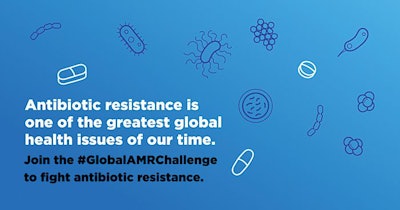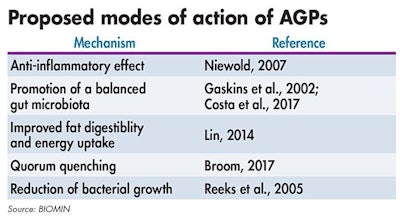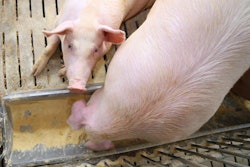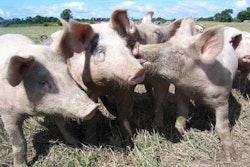
The discovery of antibiotics in the 1920s revolutionized medicine and saved countless lives. The revelation of antibiotics’ ability to promote growth in livestock at subtherapeutic doses in the late 1940s transformed the animal protein industry, improving profits and enabling us to feed a burgeoning world.
However, the overuse of antibiotics in humans and animals has been linked to the higher occurrence of antibiotic resistance in bacteria that jeopardize the efficacy of antimicrobial treatment. The United States announced The AMR Challenge: a global initiative to combat the growing threat of antibiotic resistance at the United Nations General Assembly in 2018. The World Organisation for Animal Health (OIE), World Health Organization (WHO) and governmental bodies in many countries throughout the world have all taken steps to further study and raise awareness regarding the threat that antimicrobial resistance poses. It is critical that we are able to rely on the efficacy of antibiotics in the future.

The AMR Challenge calls on governments, companies and non-governmental organizations (NGOs) worldwide to make formal commitments that further the progress against antimicrobial resistance. (Courtesy U.S. Centers for Disease Control and Prevention)
Concerns have been raised in recent decades that subtherapeutic use of antibiotics hastens the spread of antibiotic-resistant bacteria. Mixed opinions still exist whether the use of antibiotics as growth promoters (AGPs) really plays a role in the transfer of resistance from animal pathogens to human pathogens. What is clear, however, is that these concerns have led more and more consumers as well as regulatory authorities to push to curtail AGP use, steering the industry toward antibiotic-free feeding.
Finding AGP alternatives
The search for alternatives to AGPs has become a priority in the animal food-producing sector. There are many additives available on the market that serve as alternatives. Yet, although the use of AGPs has been proven to show reproducible results in animals, the mode of action of AGPs remains unclear and debates are ongoing in the scientific community.
The dosages applied when antibiotics are used as AGPs are lower than the minimum inhibitory concentration (MIC), which is the level needed to make sure the bacterial growth is inhibited (known as bacteriostatic effect). This indicates that the dosage is too low to be able to suppress the growth of pathogens in the gut and has also been confirmed by numerous scientific studies.
Nevertheless, the use of AGPs has been proven to have effects related to the shift of the microbial community in the gut and very often bacteria involved in these shifts are lactobacilli, which are also considered to have positive and negative effects on performance.
Clearly, the gut microbiota plays a very important role by ensuring a good performance, but still more research is needed in order to better understand how an optimal animal gut microbiota should look. For this reason, it remains difficult to choose alternatives to AGPs in relation to their effect on the microbial population in the gastrointestinal tract.

Various proposed AGP modes of action have been identified, including anti-inflammatory, microbiota balance, improved digestibility, quorum quenching or inhibition and slowed bacterial growth rates. (Courtesy Biomin)
Exploring feed additive alternatives
There are other proposed modes of action of AGPs seeming to be important for a good animal performance. These proposed mechanisms could be addressed with alternative products available on the market.
Examples for the modes of action that could be targeted are:
- the anti-inflammatory exerted by antibiotics,
- the promoted balance of the microbiota,
- a better digestibility of fat and energy uptake,
- the quorum-quenching or inhibition of cell-to-cell communication effect of antibiotics at sub-lethal dosage,
- the capacity of antibiotics to slow down the growth rate of some bacteria also at dosages below MICs.
Food animals are subject to many factors that can lead to inflammation, which results in “wasted” energy that could otherwise be put toward performance. Plant-based substances with anti-inflammatory effects can limit energy wastage, thereby promoting growth.
Probiotics can help establish a healthy microbial environment in the gut, and they have beneficial immunomodulatory properties.
Digestibility enhancement makes more of the nutritional value of the feed available to the animal. It is also a top reason that livestock producers use phytogenic feed additives.
Bacterial species are now known to coordinate behavior at a multicellular level, known as quorum sensing. Cells produce small, diffusible signal molecules continuously and as the population grows, these molecules accumulate. When molecules reach a certain threshold, concentration changes in gene expression are triggered and lead to changes in population behavior, e.g. virulence. The inhibition of communication, called quorum quenching, is possible using quorum-sensing inhibitors found in nature.
It has been demonstrated that organic acids have a direct antimicrobial activity against pathogens such as E. coli and Salmonella, and they might contribute to gut health indirectly by improving digestibility.
Holistic approach
When looking for alternatives to antibiotic growth promoters, it is important to consider more than just one aspect related to the mode of action of AGPs.
Nevertheless, it is important to recognize that it is not simply a matter of substitution or 1:1 replacement of AGPs with novel feed additives. A holistic approach should be implemented considering nutritional, hygienic and environmental intervention always linked to a robust biosecurity strategy. Increased adoption of novel additives and preventive strategies can reduce the need for antibiotic use as growth promoters and to combat antibiotic resistance.
References available upon request.













